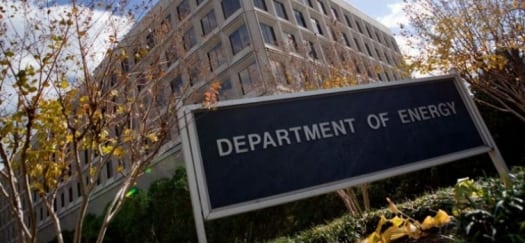
News of a Department of Energy plan to use weapons complex land to host carbon-free electricity projects is being met with a mix of excitement, skepticism and curiosity about how the process might work.
A smattering of stakeholders contacted by Exchange Monitor Tuesday said they have many questions about the initiative announced last Friday in Washington, D.C., by Secretary of Energy Jennifer Granholm.
Initially, DOE wants to sign leases leading to clean energy projects of 200 megawatts or more at the Idaho National Laboratory, the Nevada National Security Site, the Hanford Site in Washington, the Savannah River Site in South Carolina and the Waste Isolation Pilot Plant (WIPP) in New Mexico.
A DOE spokesperson reached by the Monitor declined to share further details.
During the announcement, Granholm said in coming months DOE will seek proposals from developers for the large tracts of land available. Hanford for example has potential to host one of the largest solar projects in the United States, Granholm said.
“The basic premise of it makes a lot of sense,” said David Reeploeg, director of Hanford Communities, a TriCities economic development group. There is a lot of unused and uncontaminated land at Hanford and elsewhere that is available, he said. “There are a lot of unanswered questions at this point but we are interested in learning more,” Reeploeg said by phone.
DOE plans a local Cleanup to Clean industry day at Hanford on Sept. 22
“I think this is an excellent opportunity for DOE to turn their liabilities into assets,” said Jennifer Chandler, administrator for the Village of Piketon, Ohio, which borders DOE’s Portsmouth Site.
While not on the initial DOE list, Chandler thinks Portsmouth would be a natural addition given its major electric lines. Prior to the DOE program, a California developer, Oklo, was already planning one or more small modular reactors near Portsmouth, Chandler said.
“DOE has not publicly discussed the issue in New Mexico,” said Don Hancock who heads the nuclear waste safety program for the Albuquerque-based Southwest Research and Information Center. “Unique to WIPP is the WIPP Land Withdrawal Act,” and it does not appear to address electricity production, Hancock said.
A Tennessee Valley Authority spokesperson did not immediately say if the federal utility might take part in the DOE program but did point to its exploration of a small modular reactor project, located adjacent to DOE’s Oak Ridge Site in Tennessee.
A spokesperson for Dominion Energy, based in Richmond, Va., said via email the company is “aware of the Department of Energy’s initiative and will continue to collaborate with customers and stakeholders regarding sustainable energy projects across our service territory,” which includes South Carolina.
“It is not going to happen very quickly,” given the projects will still need National Environmental Policy Act reviews, and that takes time, said an executive with a DOE contractor. Also, some companies might not be eager to have DOE as a landlord, the industry source added.